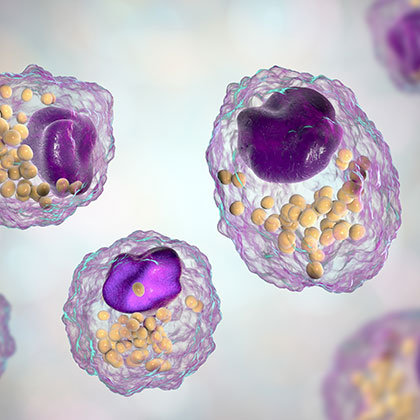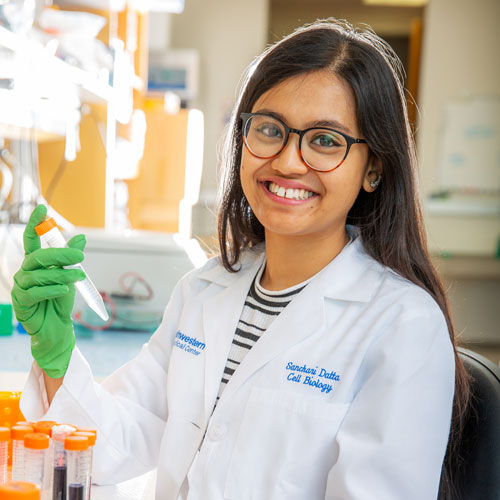Student Profile in Snx14 Protein
Sanchari Datta
Cell & Molecular Biology Graduate Program
Mentor: Mike Henne, Ph.D.
Undergraduate Degree: Integrated BS-MS
Undergraduate Institution: Indian Institute of Science Education and Research
Hometown: Kolkata, India
Awards/Fellowships: 2010 - 2015 KVPY (Kishore Vaigyanik Protsahan Yojana) Fellowship, awarded by Department of Science and Technology, Government of India
2011 and 2012 IAS, INSA, NASI Summer Research Fellowship Awarded by Indian Academy of Science, Bangalore; National Academy of Sciences, India, Allahabad and Indian National Science Academy, New Delhi
2013 Summer Internship sponsored by EMBL Heidelberg, Germany
How did you become interested in science and/or research?
My interest in science became pronounced with my first visit to 'Science city' in Kolkata, India, which is a science museum where among many science exhibits, I was exposed to biodiversity and evolution of life. Alongside, the study of the amazing DNA structure, the hereditary unit of life which dictates the diversification of different life forms particularly captured my attention in Life sciences in school.
During my undergraduate studies in IISER Kolkata where we had laboratory coursework, I had fun learning different techniques where we were able to manipulate genes by cloning, introduce them in a cell, and image them under a microscope and look at how different organelles behave. To pursue my interest in research, I started doing internships annually for two months in different research laboratories all over India and I did one in Germany. Every time I encountered a new problem, my passion for science grew, made me more inquisitive, and drove me towards following my passion.
Please describe your research.

I am studying the role of a cerebellar ataxia disease SCAR20 associated protein Snx14 in regulating fatty acid metabolism. My studies indicate that Snx14 is an ER-lipid droplet tether which regulates fatty acid processing and proper lipid droplet maturation at ER-lipid droplet contact sites. Defects in fatty acid metabolism and ER-lipid droplet crosstalk causes accumulation of toxic lipids and hence is associated with several metabolic and neurological disorders. I am investigating how Snx14 protects cells from fatty acid induced lipotoxicity which will help us to figure out the underlying cause of the neurological disease SCAR20.
Why did you choose UT Southwestern?
Every lab at UTSW conducts world-class research trying to solve long-standing, intriguing problems. There is opportunity of collaborations with several labs and UTSW is equipped with several state-of-the-art core facilities such as Proteomics Core facility, Live Cell Imaging Core, the EM Core facility and Lipodomics facility. The graduate school has a very well-defined coursework where students learn about the basic science and experiment designing strategies and science ethics. We get the chance to rotate and explore several labs before joining one. We are closely guided by our mentor and have annual meetings with three to four faculty of thesis committees. We get the chance to present our research annually in our program and also department where we receive useful feedback from our peers, postdocs, and faculty. I believe all these facilities will help me to develop as a successful scientific career.
What do you think makes the Cell and Molecular Biology Program one of the best?
Our program offers a collaborative environment where we receive continuous feedback and criticism on our research from several labs, learn different techniques, and develop communication skills. We are also offered a grant-writing course for a semester where we learn how to put our creative thoughts on paper and communicate our research most efficiently. Other than that, we have journal clubs where we discuss several peer-reviewed journals in a relaxed and friendly atmosphere which helps us to think critically about the field.
What do you love about the Cell and Molecular Biology Program?
At UTSW, mentors guide their graduate students closely towards building a successful career in science. The scientific community is very collaborative and inspiring. Every lab pursues their research with a lot of passion. UTSW has many core facilities on its campus which are very efficient and allows labs to use creative techniques to solve scientific problems. I love to be part of this great scientific community that is helping me to grow as a scientist.
– Sanchari Datta, Cell and Molecular Biology Graduate Program

